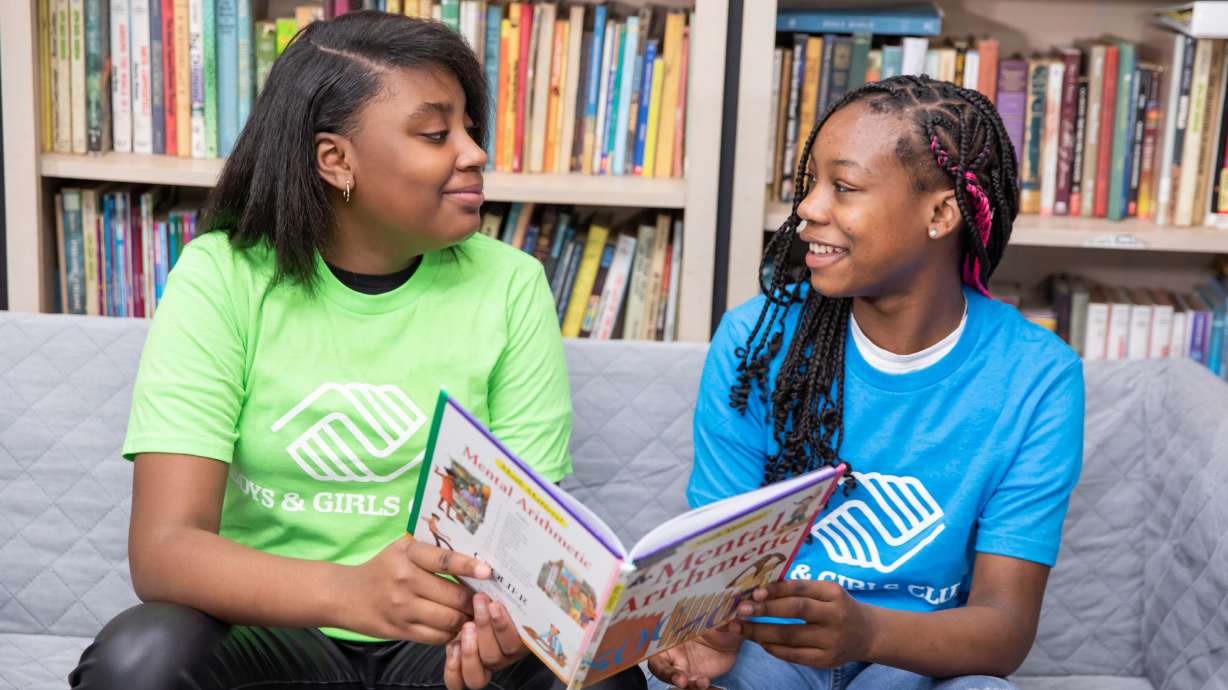Estimated read time: 4-5 minutes
This archived news story is available only for your personal, non-commercial use. Information in the story may be outdated or superseded by additional information. Reading or replaying the story in its archived form does not constitute a republication of the story.
- A Boys & Girls Club of Greater Salt Lake assessment highlights a significant gap in affordable and accessible child care programs in Utah.
- Only 36% of the need for licensed child care is currently met, leaving many families struggling.
- The Boys & Girls Club offers a set cost to help bridge this gap, but broader public investment and partnerships are necessary to fully address the demand.
SALT LAKE CITY — Brittany Elder was struggling to pay her expenses and find child care for her 18-month-old as a recently single mom.
"As a single mom, earning $40K a year, at the time, I struggled after my son's father and I divorced. He was just 18 months old. Half of my income went to day care costs," recalled Elder.
Elder isn't alone. Two-parent households and single-parent households in Utah are struggling to find affordable care for their children. The cost of care averages around 17% of a family's income for a four-person family in Utah with two children under 6. The U.S. Department of Health and Human Services defines affordable child care as care that costs no more than 7% of a family's income.
The affordability is compounded by the limited availability. More than 154,000 children under the age of 6 live in Utah, with parents in the workforce. However, there are just 54,804 licensed child care spots in 1,367 licensed programs statewide, according to a Voices for Utah Children report. The gap between licensed child care providers and needs — only 36% being met overall — means working families of nearly two-thirds of Utah's youngest children must rely on alternate arrangements, the report added.
A community assessment by the Boys & Girls Club of Greater Salt Lake highlights the gap in affordability and access to youth programs in Utah.
"As a lifelong early childhood educator, I've watched the gap grow and widen and one of the key things to closing that is affordable access to quality child care. Not someone to watch my child, but really quality, good child care where children are engaged for the amount of time that they're away from their parents. Parents need child care because they're working to be able to provide for their families," said Tammy Spicer, early childhood educator at the club.
The Boys & Girls Club of Greater Salt Lake is attempting to fill some of the gaps faced by parents with tuition prices, set for children aged 3 and up, at $145 a week or less and operating hours from 6:30 a.m. to 6:30 p.m.
"When he turned 4, I discovered the Boys & Girls Club. To say I'm grateful for this program is an understatement. Their affordable daycare allowed me to keep my job while going back to school and finishing my degree," said Elder.
However, the need extends beyond early childhood programs. The Utah Afterschool Network reports that 91,403 school-aged children need an after-school program, with eight on a waiting list for every child receiving services. Out-of-school time services for teens are also rare with only 60 of the 213 programs reported by the Utah Afterschool Network offering services for youth aged 13-18.
"Some of the things that popped up in our community needs assessment that nobody's surprised about is the need for after-school care and out-of-school time, affordability and accessibility for those programs, those are the two biggest barriers for parents. There is a changing demographic of where kids and families are living and residing and locating — as things become more expensive in the downtown areas there's some geographic shift that families are relocating to different areas of the community," said Amanda Ree Gardner, Boys & Girls Clubs of Greater Salt Lake president.
Transportation can pose an issue, a need nonprofits attempt to fill.
"We try to transport to as many schools as we can, if we have a seat on a van and we go to that school we can accommodate that kid in our programs. We're trying to rely on, how can we create partnerships with the schools or with UTA or others where we could expand that transportation because we do know also from our community needs assessment that transportation and broader transportation from the areas around our clubs is a big need for our families," she added.
To better meet the needs of children and teens in Utah, public investment and partnerships are needed.
"Policymakers like to think if we need to reach kids with services — whether it's mental health, counseling, career readiness and workforce readiness — we're going to put all the money into schools. They need every penny, I totally get that, but sometimes in legislation community-based organizations are excluded from applying," added Gardner. "Making some of those funds available to community-based organizations, where we can do a really good job meeting the kids and the needs. We know that there are so many kids who need services and school is a great way of getting that but we also stand in the gap between home and school."









